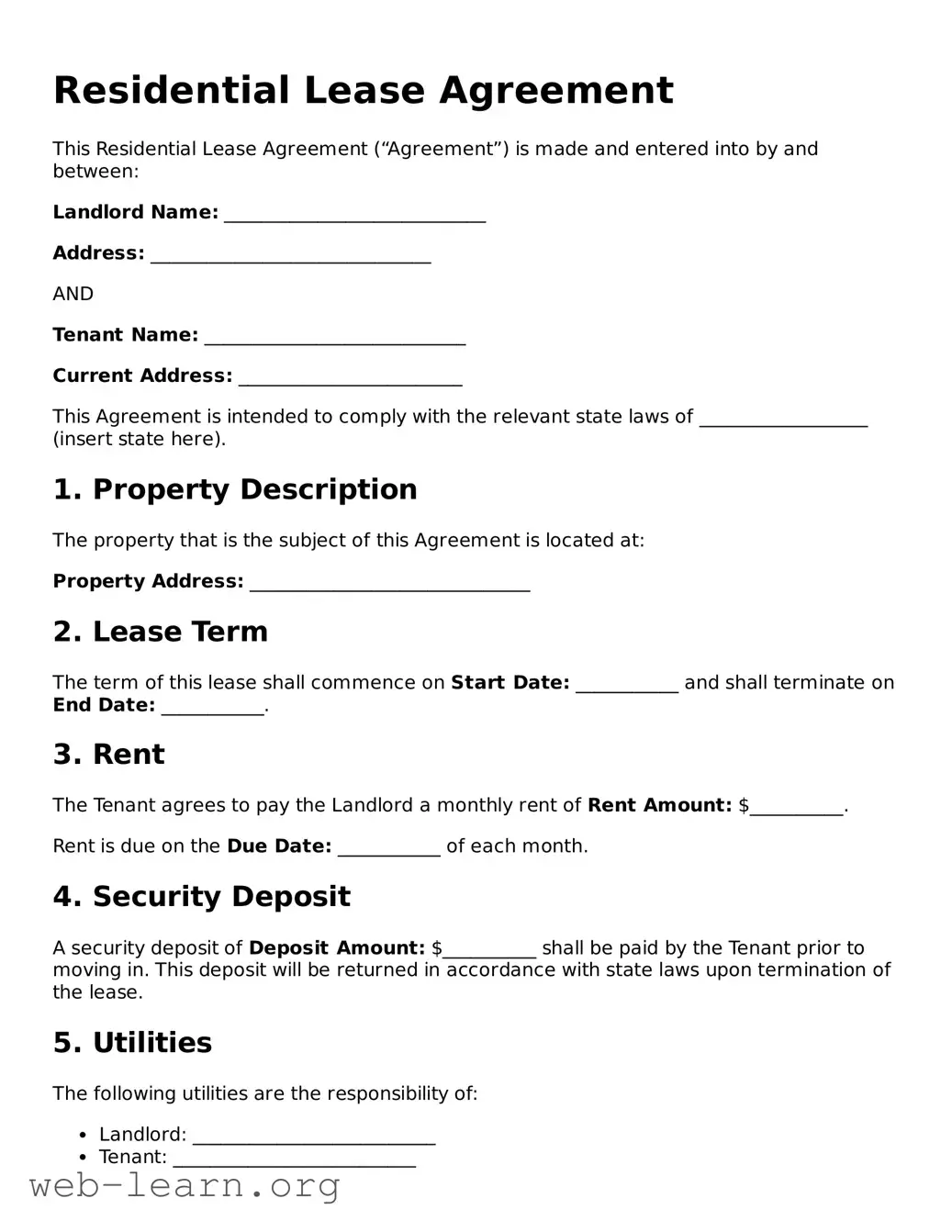Residential Lease Agreement
This Residential Lease Agreement (“Agreement”) is made and entered into by and between:
Landlord Name: ____________________________
Address: ______________________________
AND
Tenant Name: ____________________________
Current Address: ________________________
This Agreement is intended to comply with the relevant state laws of __________________ (insert state here).
1. Property Description
The property that is the subject of this Agreement is located at:
Property Address: ______________________________
2. Lease Term
The term of this lease shall commence on Start Date: ___________ and shall terminate on End Date: ___________.
3. Rent
The Tenant agrees to pay the Landlord a monthly rent of Rent Amount: $__________.
Rent is due on the Due Date: ___________ of each month.
4. Security Deposit
A security deposit of Deposit Amount: $__________ shall be paid by the Tenant prior to moving in. This deposit will be returned in accordance with state laws upon termination of the lease.
5. Utilities
The following utilities are the responsibility of:
- Landlord: __________________________
- Tenant: __________________________
6. Maintenance and Repairs
The Tenant agrees to notify the Landlord promptly of any needed repairs. The Landlord shall be responsible for repairing any issues that arise, except for damages caused by Tenant misuse.
7. Use of Premises
The Tenant shall use the premises solely for residential purposes. Any illegal activities on the property will result in immediate termination of this Agreement.
8. Pets
Allowed: Yes / No (circle one)
9. Termination
Upon expiration of the lease term, the Tenant must vacate the premises unless written renewal is agreed upon by both parties.
10. Signatures
By signing below, both parties agree to the terms and conditions of this Residential Lease Agreement.
______________________________
Landlord Signature: _________________________ Date: __________
______________________________
Tenant Signature: ___________________________ Date: __________
